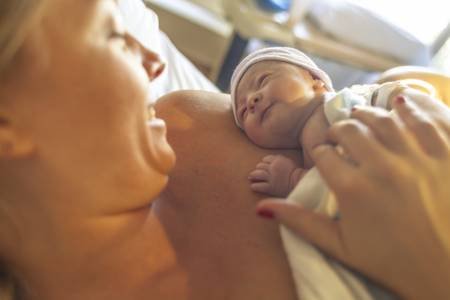
Pain and Pleasure in Childbirth
By Mileyda Menéndez Dávila
sentido@juventudrebelde.cu
June 9, 2020
Translated and edited by Walter Lippmann for CubaNews.
In the past century, obstetricians and gynecologists from various countries have defended the hypothesis that an important function of pleasure in its maximum physical expression is to prepare women physiologically for the intensity of childbirth.

As a natural process, childbirth can be pleasurable… for some people too much. Photo taken from the site Bebés y más Autor: Tomado de Internet Published: 16/06/2020 | 09:07 pm
Although there are few studies available on the subject, it has been scientifically proven that orgasms can occur during labor. This phenomenon has been called a myth for centuries because in Western culture childbirth is associated with heroic pain and orgasm with pleasure of external origin (even if it is self-provoked), therefore, it is not acceptable that both concur in the same act without degrading stigmas.
In the biological field, things are not binary, as most conservative tendencies claim. In fact, since both processes are mediated by hormones and focus on the genital area (between the first and second chakra), there is reason to assume that the nervous system interprets painful signals according to very personal patterns, associated with the level of tolerance for physical pain, expectations with that pregnancy and the circumstances surrounding childbirth.
In the past century, gynecologists from various nations have defended the hypothesis that an important function of pleasure at its maximum physical expression is to prepare women physiologically for the intensity of childbirth.
In the 1970s, the Frenchman Michel Odent promoted actions to make birth a moment of joy, not of sacrifice or shame. Original cultures see it that way, and today new voices are raised in favor of the body acting according to its ancestral knowledge.
Adrenaline, oxytocin, dopamine… A whole cocktail of hormones is unleashed during labor, each at its own pace. And if the mind accepts the right to experience the act of giving life as pleasure, the sensations can be strong, but fluid, without panic,. That “permission” helps to interpret them without guilt, in some cases with similar enjoyment of what for that woman is the reference of an orgasm, as occurs in a sudden consensual sexual act.
Nutritional concern
Dr. Odent was also one of the driving forces behind breastfeeding in the baby’s first hour of life because of its health benefits for both of us.
Although formalized reports are rare, some mothers describe something like an orgasm when they breastfeed. Such is the case of a 32-year-old Matanzas reader, who suggested including it in the list of involuntary pleasures because on a physical level it is enjoyable, but she thinks “that morally it is not right”.
She says her breasts have always been very sensitive and her partner manages to bring her to a climax just by stimulating them.
Once again, it is cultural assumptions that prevent that woman from enjoying her own body in a natural, unintended sense with morbidity.
Broadly speaking, Dr. Elvia de Dios, a trained psychiatrist and therapist at CENESEX (National Center for Sex Education), explains that the baby’s suction triggers the production of oxytocin, and that hormone activates the functioning of essential glands. These incluse the hypothalamus and pituitary gland, which in turn facilitate intense nerve discharges that stimulate the contractions of the uterus and help it return to its normal size and muscle tone.
The reader who consults is a privileged woman in the quality of her nervous reflexes, says the expert. It should not inhibit a reaction that is not associated with any sexual thought or call into question your motherhood.
For questions about orgasm and other issues of your sexuality or sexual identity, you can contact Dr. Elvia de Dios at the Cenesex telephone counseling service, which she provides Tuesday and Thursday from 9:00 a.m. to 2:00 p.m. at 7638-8405.

You must be logged in to post a comment.